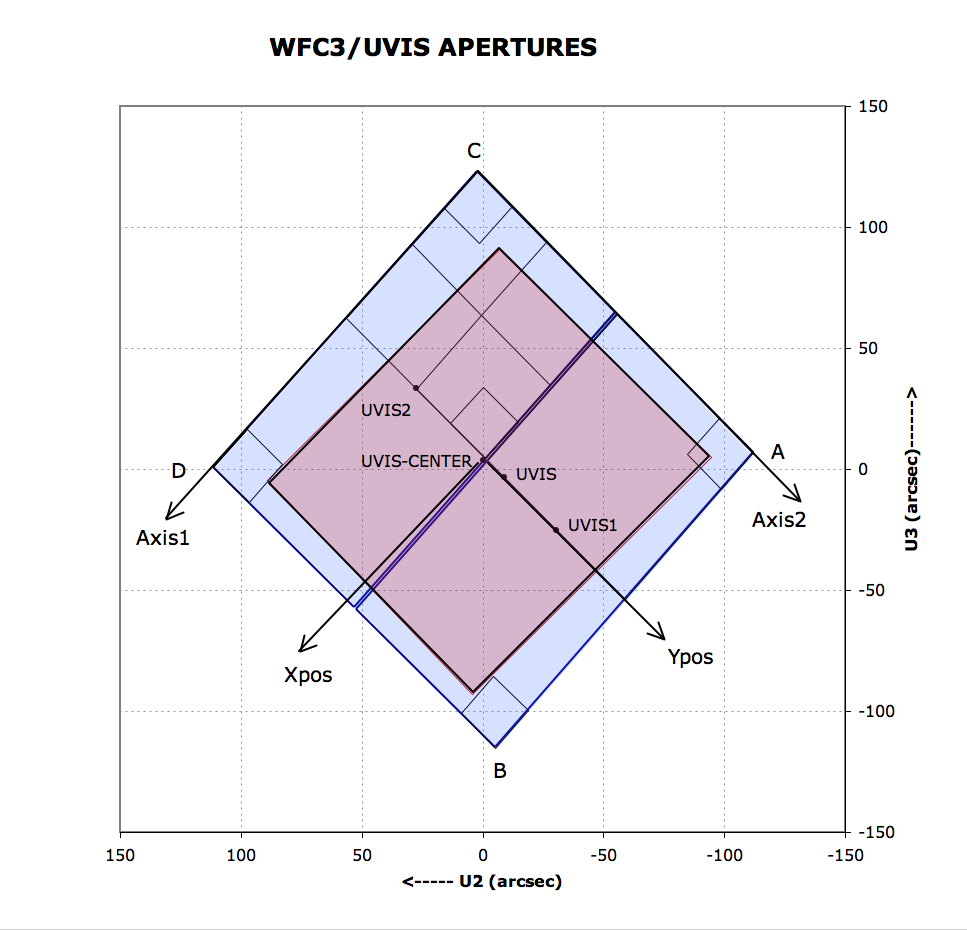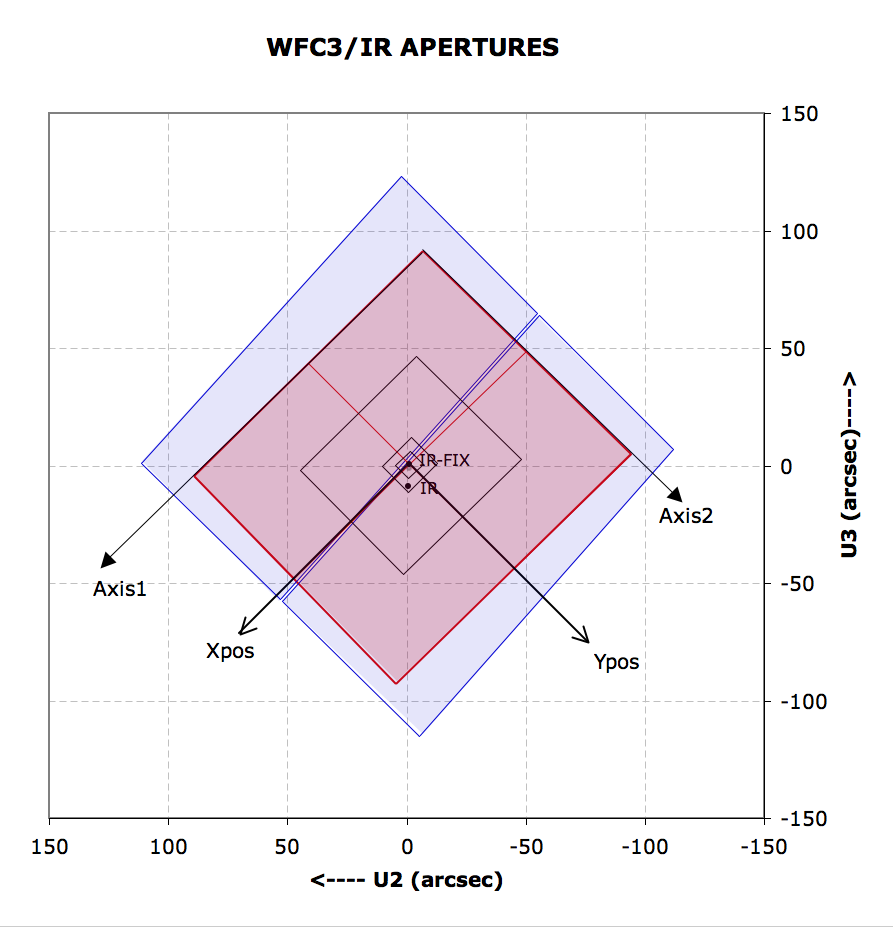12.5.3 WFC3 Coordinate System
WFC3 is located on-axis in the focal plane of HST. This article shows how the detector reference frame compares to HST's U2, U3 reference frame. |
On This Page
Introduction
Figures 12.1 and 12.2 illustrate the locations of the UVIS and IR apertures. In the figures, the outlines of the full-detector apertures of both the UVIS and IR channels are indicated, as projected onto the sky and with respect to the HST U2-U3 coordinate system.
Figure 12.2: IR Aperture Diagram

